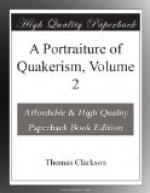All things having been thus prepared, the guests wash their hands, and seat themselves at table. The master of the family, soon after this, takes his cup of wine in his right hand, and the rest at the table doing the same, he says, together with all the others, “Blessed art thou, O Lord our God, King of the Universe, who hast created the fruit of the vine.” This is followed by a. thanksgiving for the institution of the passover. Then the cup of wine is drank by all. Afterwards the master of the family says, “Blessed art thou, O Lord our God, King of the Universe, who hast sanctified us with thy commandments, and commanded us to cleanse our hands.”
Then the master of the family desires the guests to partake of the charvil dipped in salt water, which he gives them with an appropriate blessing. He makes them touch also the dish, containing the egg and shank bone of the lamb, and repeat with him a formula of words suited to the subject. He then takes the second cup of wine, and uses words in conjunction with the rest, expressive of the great difference between this and any other night. After this, copious remarks follow on the institution of the passover. Then follow queries and answers of the rabbis on this subject: then historical accounts of the Jews: then the fifteen acts of the goodness of God to the Jewish nation, which they make out thus:—He led the Jews out of Egypt: he punished the Egyptians: he executed judgment on their gods: he slew their first-born: he gave the Jews wealth: he divided the sea for them: he made them pass through it as on dry land: he drowned the Egyptians in the same: he gave food to the Jews for forty years in the wilderness; he fed them with manna: he gave them the sabbath: he brought them to Mount Sinai: he gave them the law: he brought them to the Laud of Promise: he built the Temple.




